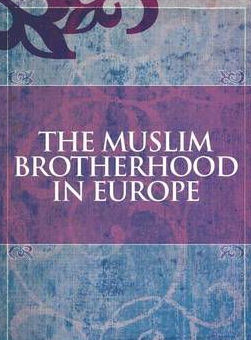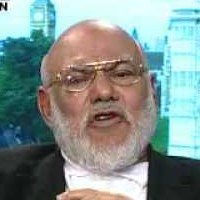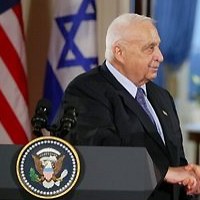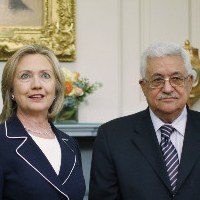![]()
Sun, June 19, 2011 | The Meir Amit Intelligence and Terrorism Information Center

Cover of the book "The Muslim Brotherhood in Europe" by Roel Meijer and Edwin Bakker, release date: nov 2011
The Muslim Brotherhood – Chapter 9: The Egyptian Muslim Brotherhood’s ties to its branches in Middle Eastern and Western countries
The Muslim Brotherhood is an Islamic mass movement whose worldview is based on the belief that “Islam is the solution” and on the stated aim of establishing a world order (a caliphate) based on Islamic religious law (Shariah) on the ruins of Western liberalism. With extensive support networks in Arab countries and, to a lesser extent, in the West, the movement views the recent events in Egypt as a historic opportunity. It strives to take advantage of the democratic process for gradual, non-violent progress towards the establishment of political dominance and the eventual assumption of power in Egypt and other Middle Eastern countries.
Overview
The Muslim Brotherhood emerged in Egypt as a fundamentally Egyptian Sunni-Muslim movement. However, its desire to reestablish the Islamic caliphate and spread Islam across the globe, as well as its unique character as a socioreligious movement, soon led to the spread of its activity to other scenes in the Arab and Muslim world, the Middle East, and Western countries.
Starting in the 1940s, Islamic political daughter movements were established in most Middle Eastern countries, with an ideology and organizational structure similar to those of the Egyptian Muslim Brotherhood. In these countries, the initial cores of the movement were usually formed by local activists ideologically inspired by their studies in Egypt. However, only some movements defining themselves as Muslim Brotherhood are officially linked to the Egyptian Muslim Brotherhood and considered its offshoots. Some, mostly in Western countries, deny belonging to the Muslim Brotherhood and having organizational ties with it.
The Egyptian movement fostered and institutionalized its ties with the daughter movements established in Arab countries. The most notable among them are Hamas, the Palestinian daughter movement; the Muslim Brotherhood movements in Jordan and Syria where they form a major opposition to the regimes; and the movements in Lebanon, Iraq, Tunisia, and other countries.
Due to security considerations, the leadership of the Egyptian movement has kept a low profile and exercised extreme caution with its foreign connections. The Muslim Brotherhood leaders in those countries usually serve as deputy general guide on foreign affairs. For example: Muhammad al-Huweydi, a former senior official in the Syrian Muslim Brotherhood, who served in this post under general guide Mahdi Akef; and Ibrahim al-Masri, director general of Al-Jama’ah al-Islamiyya, the Muslim Brotherhood branch in Lebanon, who was about to be appointed to this post under the new general guide, Mohammed Badie.
According to its core idea, the global Muslim Brotherhood movement, established in 1982, is meant to be a centralized body with central leadership institutions where the movement’s national branches are represented. These institutions were designed to be the highest authority on all political and other significant decisions made by the national branches.
However, the power struggles that developed between the Egyptian leadership and the national Muslim Brotherhood branches for control over the global movement resulted in increasing decentralization, which turned the global movement into little more than a loose federation of organizations functioning as a coordinating and fundraising mechanism. What is more, the Egyptian general guide is often prohibited from leaving the country (being the leader of an illegal movement, which the Muslim Brotherhood is considered to be), while the lackluster personality of some of the Egyptian general guides has made it difficult for them to attend the global conferences and played a part in the deterioration of their control over the global movement.
The evolution of the relationship between the Muslim Brotherhood and its daughter movements
The following are some characteristics of the relationship between the Egyptian leadership and the daughter movements dispersed in the various countries:
a.The Muslim Brotherhood branches outside of Egypt are committed to the fundamental principles, the overall policy, and the educational method outlined by the Egyptian Muslim Brotherhood. Each leadership may make local adjustments to its philosophy, according to the particular conditions of the country where it operates.
b.The Egyptian mother movement and its general guide are the de-jure ideological and spiritual authority for the other Muslim Brotherhood branches. However, due to the recent proliferation of religious jurists, the fact that the Egyptian general guide has become a mostly political figure and the Egyptian leadership’s slide into ideological conservatism have made Sheikh Yusuf al-Qaradawi and other popular clerics in the Sunni-Muslim world the de-facto sources of religious legal authority (marja’iyya) of the Muslim Brotherhood.
c.The leaderships of the non-Egyptian movements are required to consult the Egyptian leadership on issues that may affect Muslim Brotherhood branches in other countries, and accept its decisions when there are disagreements within the movements. Even so, it appears that the power of the international movement to enforce its decisions on the Muslim Brotherhoods in the various countries is limited.
d. The Muslim Brotherhood movements outside of Egypt enjoy freedom of action with regard to domestic issues that do not influence movements in other countries. This stems from the recognition that each movement faces challenges specific to the country where it operates, and from the assumption that each local leadership is better acquainted with its own territory. At times, the Egyptian leadership provides counseling and general guidance for the political tactics of the various movements, but does not impose its opinion on them. When the Egyptian movement has attempted to enforce its authority, the local movements have criticized it for seeking to undermine their sovereignty.
Over the years, the overall pan-Islamic aspirations of the Muslim Brotherhood have proven unable to overcome the local interests of each national movement. The ultimate goal of the Egyptian movement is confined to that country, which is why the Egyptian movement’s leadership fosters its foreign relations mostly for raising funds and building up its domestic status. In many cases, the fostering of foreign relations is inversely correlated with the internal legitimacy of the reigning general guide, representing an attempt to compensate for weakness with external legitimacy.
The international Muslim Brotherhood reached the peak of its influence under Mustafa al-Mashhur (in 1996-2002); however, its sphere of activity has diminished following his death. Former general guide Mahdi Akef, who demonstrated weak leadership, made efforts to reassert his leadership, resolve the conflicts in the international movement and revitalize it, even at the cost of meddling with the internal affairs of the movements in the various countries (such as mediating between the radical and pragmatic factions of Jordan’s Muslim Brotherhood in 2010).
In recent years, non-Egyptian Muslim Brotherhood movements have been increasingly questioning the right of Egypt’s Muslim Brotherhood to continue heading the global organization,[68] and demanding more independence from its authority. This is apparently motivated by the lack of a strong general guide and the Egyptian movement’s slide into conservatism. Be that as it may, the tradition of the Egyptian movement’s leadership in the global Muslim Brotherhood is still maintained.
The Muslim Brotherhood’s stance towards jihadist/terrorist organizations
The Muslim Brotherhood has produced the founders of many radical and fundamentalist Islamic movements in Egypt (Al-Jama’ah al-Islamiyya, Al-Jihad) and in the Islamic world (Al-Qaeda and global jihad networks in various places worldwide). Accordingly, the movement has been branded as a terrorist organization and accused of having ties to similar organizations almost from the day it was established.[69]
The movement denies any connection with terrorist organizations inside and outside of Egypt, stressing the significant difference between its own definition of its worldview and the means to promote its objectives, and the way militant and Islamic jihadist groups do so. However, the Muslim Brotherhood makes a distinction between the right of “resistance” on one hand and terrorism and other illegitimate activities on the other. Meaning, it unequivocally supports the terrorist activities of Hamas and Hezbollah, portraying them as legitimate “resistance” (even when directed against civilians), as well as activity against the “occupation” in Iraq (support for which has been voiced by some of its leaders). On the other hand, it objects to Al-Qaeda’s terrorist activity.
Even here, things are not always consistent. The distinction between “resistance” and “terrorism” tends to be vague, and the movement occasionally has difficulties drawing the line between them. For example, in May 2008 former general guide Mahdi Akef said that Osama Bin Laden was a “jihad warrior”, and that he supported Al-Qaeda’s activity. He was soon required to qualify his statement due to the wave of criticism that targeted him and the Muslim Brotherhood (eventually, Akef said that the Muslim Brotherhood agreed with Al-Qaeda’s philosophy but objected to violence against civilians and Muslims).
The Muslim Brotherhood’s stance towards the U.S. the West
The stance towards the West and the relations with it is an issue that poses ideological and practical difficulties to the Muslim Brotherhood leadership. In general, its Islamic ideology rules out Western values, particularly those perceived as permissive, and calls to reject any penetration or influence of Western views, values, and cultural products (the Islamic ideology considers the penetration of the West a deliberate effort to weaken the world of Islam and the moral resilience of its people, accusing it of its failures). The writings of the movement’s early ideologues clearly reflect the view that considers the nation of Muslim believers to be locked in an existential struggle against the West.
However, the Muslim Brotherhood is influenced by the trend of globalization, Western technology, and American power and influence in the Middle East. The U.S.-led campaign for democracy in the first half of the previous decade posed an ideological challenge to the movement, since, at the time, it forced the regime to let go of its hold and allowed the movement to partially realize its political power. The movement was therefore faced with the dilemma of whether to support foreign Western messages — while making unprecedented political achievements — but also lose some of its Islamic character and risk compromising its image.
The internal debate on the relationship with the U.S. and the stance towards the West is one of the most complex issues dealt with by the movement: its conservative faction remains fairly loyal to the official Muslim Brotherhood ideology and rejects any dialogue with the West. For example, in the Danish cartoon crisis (January 2006), the Muslim Brotherhood led the protests and demonstrations sparked by the cartoons that offended Prophet Muhammad.
The movement portrayed itself as the “protector of Islam”, which considers integration and acceptance of Western values a scheme to weaken the Islamic nation. On the other hand, the group affiliated with Hassan al-Banna and the pragmatic factions consider the West as a legitimate tool for achieving its political objectives. The difficulties in formulating a cohesive policy on the issue are evident in the leaders’ vague statements on the relations with the West.[70]
Supporters of the pragmatic view also find it hard to reconcile the ideological difficulties in establishing relations with the West, attempting to play both sides of the issue.[71] Muslim Brotherhood members would like to launch a dialogue with “groups in American society” (i.e., social organizations and associations, academia members, and intellectuals) and not with the administration itself. The terminology used by the movement’s spokesmen in this context is democratic.
All Muslim Brotherhood factions deny having contact, as a movement, with the “infidel” U.S. administration.[72] While the movement’s entry into the Egyptian parliament in 2005 did open a new communication channel to official Western figures, they were held with the Muslim Brotherhood parliament faction as independent MPs rather than representatives of the movement. Issam al-Aryan, the former chairman of the Muslim Brotherhood Political Bureau and one of the reformist faction leaders, is considered in charge of the movement’s contacts with the U.S. and the West, although he denies it.
In actuality, routine contacts between the Muslim Brotherhood and the U.S. embassy in Egypt began in the 1970s, under Sadat. In the 1980s, the embassy officials occasionally visited the movement’s headquarters in Cairo. The contacts stopped at the movement’s request following the September 11 attacks. In June 2005, U.S. Secretary of State Condoleezza Rice promised that the U.S. would cut off its ties with the Muslim Brotherhood; however, the contacts resumed within about a year.
U.S. law-level officials have openly met with Muslim Brotherhood MPs (as independent delegates) in the presence of other Egyptian figures, including members of the National-Democratic Party. Saad al-Katatni, the head of the Muslim Brotherhood parliament faction, was allowed to visit an academic conference in Georgetown University only in his capacity as parliament member. It was also reported that former deputy general guide Mohammed Habib met with U.S. academia members on several occasions.
The Muslim Brotherhood’s relationship with Europe
Throughout history, senior Muslim Brotherhood figures have played major and even leading roles in the creation and direction of the network of Islamic organizations in Europe, which to a great extent followed the organizational and conceptual model of the Egyptian Muslim Brotherhood. For now, it appears that these organizations, while maintaining contact with the Egyptian Muslim Brotherhood, have developed their own activities and organizational patterns (local leadership) and act according to the principles of the global Muslim Brotherhood, without constantly taking organizational direction from the movement leadership in Egypt.
The major component in the Muslim Brotherhood’s activity in Europe is the establishment of Islamic centers in the Muslim immigrant communities in European countries. The movement considers this a necessity dictated by reality (many of its leaders fled to Europe to escape persecution by the regimes in their respective countries) and a mission (the transmission of Islamic law, the Sharia, to immigrant communities). This also has the approval of Sheikh Yusuf al-Qaradawi who, while not an official member of the Muslim Brotherhood, currently enjoys considerable influence among the Muslim communities of Europe, outshining Mohammed Badie, the general guide of the Muslim Brotherhood.
This comprehensive analysis of the Muslim Brotherhood (by ITIC) consists of 12 chapters. All 12 chapters are listed below:
Chapter 1: The historical evolution of the Muslim Brotherhood in Egypt
Chapter 2: The ideology of the Muslim Brotherhood
Chapter 3: The Muslim Brotherhood’s education, preaching, and social activity
Chapter 4: The structure and funding sources of the Muslim Brotherhood
Chapter 6: The Muslim Brotherhood’s stance on the Palestinian-Israeli conflict
Chapter 7: The development of political discourse in the Muslim Brotherhood and the 2007 election platform
Chapter 8: Profiles of prominent Muslim Brotherhood figures in Egypt
Chapter 9: The Egyptian Muslim Brotherhood’s ties to its branches in Middle Eastern and Western countries
Chapter 10: The Muslim Brotherhood in other Arab countries and in Europe
Chapter 11: A profile of Sheikh Dr. Yusuf al-Qaradawi
Chapter 12: Islamic jihadist organizations in Egypt ideologically originating in the Muslim Brotherhood
You can download the full study in PDF-format here
Notes:
[68] Among other things, it has been said that the general guide of the Muslim Brotherhood does not have to be Egyptian. In general, the claims against the Egyptian Muslim Brotherhood’s dominance in the international movement and criticism of the global movement’s structure were brought up already in the early days of its existence.
[69] For example, in February 2003, against the backdrop of the riots in Chechnya, the movement was put on the Russian government’s list of terrorist organizations.
[70] On several occasions in 2004-2006, former general guide Mahdi Akef noted that the U.S. reform and democratization plan was designed to serve American interests, and that the drive for reform was part of a religious war to take over the hearts and minds of Arabs and Muslims. According to Akef, the promotion of secularism and political and economic liberalism is designed to strengthen the U.S. and is part of the struggle between Islamic and Western cultures; globalization is the means to bring the economies of Arab countries under the control of the West; and if the Muslim Brotherhood assumes power, it will hold talks with the U.S. only if the latter changes its attitude towards Islam.
[71] For example, Abd al-Mun’im Abul Futuh, a prominent figure from the reformist faction, said that the conflict with the U.S. was not an obstacle because Prophet Muhammad had held talks with infidels. He further noted that there was no dialogue with the U.S. because such a dialogue would be pointless and not benefit Egypt. Another reformist Muslim Brotherhood leader, Issam al-Aryan, wondered about the usefulness of the movement’s dialogue with the West — would the West accept another model of democracy in the Middle East, an Islamic democracy? On another occasion, he noted that the Muslim Brotherhood was almost the only political faction not contacted by the Americans, and that the movement, on its part, made no attempt to contact them.
[72] This is also due to concerns over the regime’s possible reaction, since any such contact held without the presence of official Egyptian figures may result in the arrest of the movement’s members.



 RSS
RSS










The Egyptian Muslim Brotherhood’s ties to its branches in Middle Eastern and Western countries | #Egypt #Islamism http://bit.ly/qh9spb
The Egyptian Muslim Brotherhood’s ties to its branches in Middle Eastern and Western countries | #Egypt #Islamism http://bit.ly/qh9spb